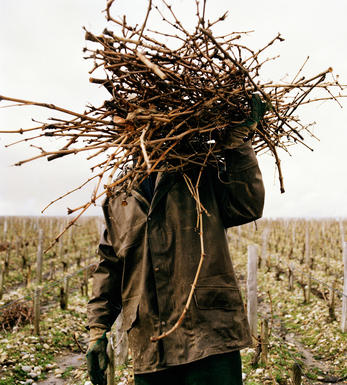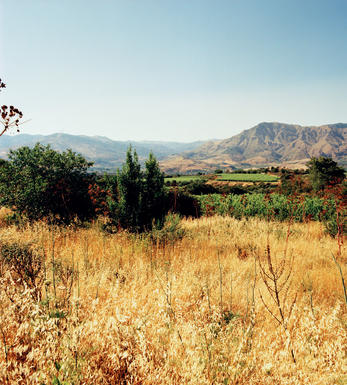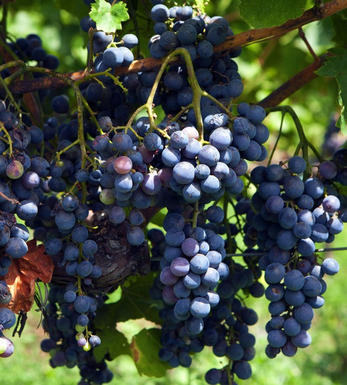
About this WINE

Bonavita, Sicily
The tiny 2.5ha wine property of Giovanni Scarfone, located at Faro Superiore, near Messina, on the north-eastern corner of Sicily, was born only in 2006, once Giovanni had returned from his ‘agraria’ studies in Bologna. He represents part of this new exciting generation of Sicilian vignaioli/vignerons, determined to remain true to their traditional roots and indigenous grape varieties.
In his case, Giovanni makes Faro D.O.C, a richly perfumed, elegant, classically structured red wine from the sedimentary, coastal white marne soils, from a blend of local grapes Nerello Mascalese, Nerello Cappuccio and Nocera; the latter a late harvest grape giving vim to the wine. The name ‘Faro’ originating from the Greek tribe – i Fari- who once lived around Messina.
Giovanni’s birthplace was actually Calabria, at which he gazes across the Straits of Messina from his vineyards. Before the wars, the Faro region was once a massive 8500 ha in size, supplying wine from the Nerello gape to be added to fine wines in northern Europe (short of sun/class!); a black and white photo, hung on Giovann’s wall, of barrels lining the Messina docks clearly testifies this. Now, as per Etna just to the south, there are only 30 ha and a handful of producers, but the quality’s even better! One of these is Giovanni’s Bonavita estate.
The wine from his Nerello and Nocera grapes, grown on marne soils is now macerated for up to 40 days in a combination of large slavonian wooden ‘tini’ and stainless steel. Compared to the Nerello wines of Etna, Giovanni’s are more ‘balsam oil and perfume’ in character, more strait-laced (than the fiery wines of Etna!).

Sicily
Sicily's total vineyard area has actually shrunk from 322,000 hectares in 1880 to 113,000ha today (2014). 85% is planted with indigenous grapes (a growing trend), of which 70% is white grapes. Up until the 1990s much of the white wine production was mainly Trebbiano for distillation; then the switch was made to international/French varieties to be used as blending material in Northern Europe. Now the authorities are beginning to study indigenous grapes more seriously, of which 15 have been identified, along with a further 50 ancient varietals. 80% of the vines are located in the western Val di Mazara part of the island, on the wide open plains. Yet 65% of the island is hilly, especially the mountainous northern and north-eastern Val di Demonte.
The island is responsible for circa 12.5% (2012 harvest) of Italy’s wine output, being the fourth most productive region (after Veneto, Emilia Romagna and Puglia). The percentage of DOC/DOCG wines here remains in the minority, with Cerasuolo di Vittoria being the only DOCG. There are 22 DOCs, notably those of: Marsala, Moscato di Pantelleria, Faro, Etna and Eloro. In 2012, the authorities introduced an all-embracing DOC Sicilia, but one that continued to allow international grapes to be included in historic DOCs, such as Etna.
The terroir is much more diverse than expected. Topgraphically, the western end of the island is essentially flat with sedimentary, calcareous clay. The centre northern eastern areas are essentially mountainous with peaks at 2000 msl., made up of ignaceous rocks with sedimentary coastal strips. The east around Catania lies on the lava flows from Monte Etna, while the high Hyblaean plateau that dominates the south-east is underpinned by limestone bedrock, over which lies a tilth of volcanic dust. The area around Vittoria is more red loam over limestone.
The climate is essentially Mediterranean. That said, the south, south west is influenced by north African warm humid scirocco winds; the north battered by northern winds spinning off the Tyrrhenian sea, making the centre almost continental; the east and south east fanned gently by Mediterranean air currents off the Ionian sea; offset by high altitudes.
The key autochthonous grapes, their zones and producers that are leading the (re) emergence of Sicilian fine wine are: white Grillo and Zibibbo around Marsala (producer Marco de Bartoli); white Catarratto and red Perricone in the centre/north (Valdibella and Porta del Vento); red Nerello Mascalese and Cappuccio, and Nocera grapes of Faro (Bonavita); Nerello Mascalese and white Carricante of Etna (Graci); red Nero d’Avola of Noto (Rigoria); and the red Frappato of Cerasuolo di Vittoria fame (Arianna Occhipinti and COS)
The good name of Marsala was created by the British during the18th century, but ruined by the Italians when they took over the industry in the late 19th century, turning it into merely a cooking ingredient. Now the likes of Marco De Bartoli are reviving the quality and reputation; turning the clocks back.
Recommended producers: Alberto Aiello Graci, Marco de Bartoli, Porta del Vento, Valdibella, Bonavita, Rigoria, Arianna Occhipinti

Nerello
The Nerello grape is primarily grown on the Italian island of Sicily, specifically in the Mount Etna region. It produces two primary varieties: Nerello Mascalese and Nerello Cappuccio; both have gained attention in recent years for their role in delivering high-quality, unique wines that reflect their volcanic terroir.
Nerello Mascalese: The dominant grape variety in the Mount Etna region, Nerello Mascalese is known for producing wines with intense aromatics, bright acidity, and a light to medium body. The grapes are thin-skinned, contributing to the wine’s elegant and pale colour. The wines typically have flavours of red berries, sour cherry, cranberry, and sometimes floral notes, with the potential to age well, developing more complex and tertiary flavours over time. As the vines grow on volcanic soils, the wines can also have a distinct minerality and earthiness.
Nerello Cappuccio: Often blended with Nerello Mascalese, Nerello Cappuccio is typically less prominent and used in smaller proportions, although it can contribute darker fruit flavours, more structure, and deeper colour to the final wine.
Due to their vibrant acidity and medium body, Nerello wines are versatile with food. They pair well with various dishes, including grilled meats, roasted vegetables, tomato-based sauces, and seafood.



Buying options
Add to wishlist
Description
The 2011 vintage was relatively balanced, spared the heat spikes of 2012. On the nose this bright, dark cherry, garnet red wine delights with wild herb and menthold, loganberry fruited notes, along with, dare I say, (Barolo) Brunate presence. And, as with other noble Italian grapes such as Nebbiolo, Sangiovese and Aglianico, it's blessed with exquisite balance and perfect pitch.The medium-full body boasts rich, svelte, flowing balsamic oil and dark berry fruit, darker thanks to the Cappuccio, while the Nocera brings a zippy pace to the wine. It's quite different to the smokier, more exotic Nerelli of Etna; the white stone giving the Faro more focus. An eye-opener.
David Berry Green Afantastic example of Sicilian class, medium bodied with supple brambly fruit, hints of mocha and spice in the background, and tied up with a lovely acidity.
Chris Lamb, London Shop
wine at a glance
Delivery and quality guarantee